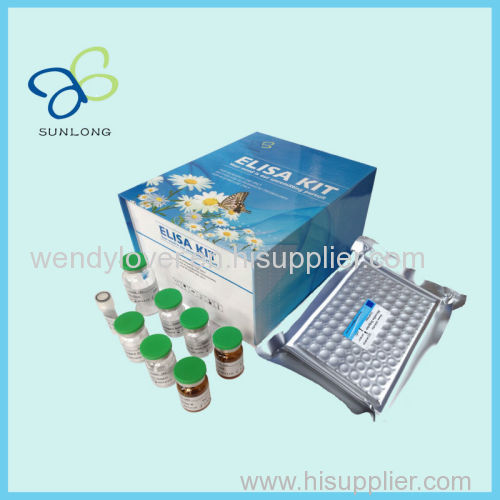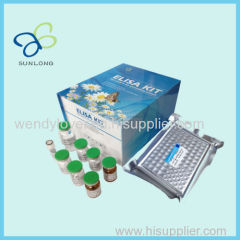|
Sunlong Biotech CO.,LTD
|
Rat dopamine DA ELISA Kit
| Payment Terms: | T/T,WU,Money Gram |
| Place of Origin: | Zhejiang, China (Mainland) |
|
|
|
| Add to My Favorites | |
| HiSupplier Escrow |
Product Detail
This kit employs Double Antibody Sandwich Technique.
This kit employs Double Antibody Sandwich Technique. The principle of Double Antibody Sandwich is based on characteristics of the tested antigen with more than two valances which can identify coated antibody and detection antibody at same time. The specific process is as follows:
1. Connect the specific antibodies and solid phase carriers to form immobilized antibodies. Wash out uncombined antibodies and impurities. Seal the rest binding sites with irrelevant proteins.
2. Join under test with immobilized antibodies for contact reaction. After a while, combine antigens in and antibodies on carriers into the antigens complex. Wash out uncombined antibodies and impurities.
3. Add biotin labeling antibodies to combine with the antigens on immune complexes. Wash out the uncombined biotin labeling antibodies thoroughly. The enzyme amount on the carrier is now positively related to the amount of the tested substance in specimens.
4. Add horseradish peroxidase to label the avidins and incorporate them with the biotin labeling antibodies. Wash out the incorporated enzyme markers thoroughly. The enzyme amount on the carrier is now positively related to the amount of the tested substance in specimens.
5. Add substrates for coloring, and compute the concentration of specimens.
[Detection principle]
This experiment use double-sandwich elisa technique and the ELISA Kit provided is typical. The pre-coated antibody is monoclonal antibody and the detecting antibody is polyclonal antibody with biotin labeled. Samples and biotin labeling antibody are added into ELISA plate wells and washed out with PBS or TBS. Then Avidin-peroxidase conjugates are added to ELISA wells in order; Use TMB substrate for coloring after reactant thoroughly washed out by PBS or TBS. TMB turns into blue in peroxidase catalytic and finally turns into yellow under the action of acid. The color depth and the testing factors in samples are positively correlated.



